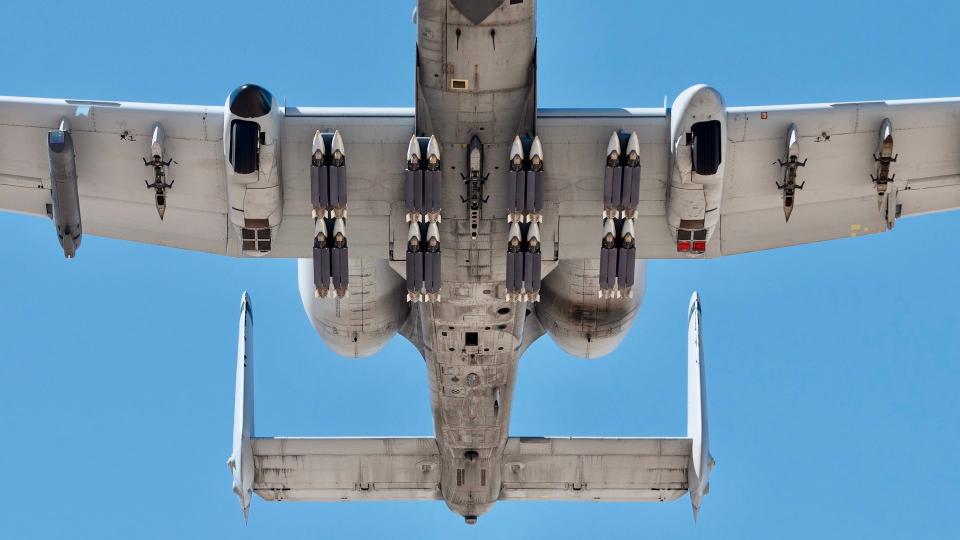A new type of Russian glide bomb has been identified in the ongoing war in Ukraine, presenting challenges for Ukrainian air defense operators. The UMPB D-30SN winged precision-guided bomb has been captured in new imagery, including photos of the weapon mounted under the wing of a Russian Aerospace Forces Su-34 aircraft. The bomb appears to be smaller in size compared to the aircraft, with a sleeker and more integrated design than its predecessor, the UMPK. A video of the weapon being launched from a Su-34 cockpit has also been released, showing the wings deploying shortly after launch.
Despite the advanced appearance of the UMPB D-30SN, there is no evidence of a powerplant attached to the bomb, which could potentially improve its range. Rumors suggest that the weapon could be dual-use, meaning it could be launched from ground-based rocket artillery as well as from aircraft, although there is no confirmation of this capability. The internal details of the glide bomb remain undisclosed, with unconfirmed reports suggesting the use of both inertial and satellite navigation for guidance. The weapon’s guidance method remains unknown, raising questions about its ability to be programmed with target coordinates after takeoff.
Russia’s demand for standoff weapons to combat Ukrainian air defenses is evident, given the reported destruction of Russian aircraft by Ukrainian forces, despite the lack of independent verification. The UMPB D-30SN, along with its predecessor, the UMPK, offer cost-effective solutions compared to other weapon options like tactical air-to-ground missiles. The addition of the UMPB D-30SN to the Russian arsenal poses a concern for Ukraine, as even the crude UMPKs were described as difficult to shoot down. As Russia continues its campaign in Ukraine, the newly introduced weapon is expected to address shortcomings of the UMPK and enhance Russian aircraft’s ability to strike targets effectively.
The UMPB D-30SN’s presence suggests an ongoing effort by Russia to widen its campaign in Ukraine while adapting to the evolving anti-aircraft defenses of Ukrainian forces. The weapon’s accuracy and potential long-range capabilities make it a valuable addition to Russian tactics, enabling indirect attacks on Ukrainian targets with relatively low cost. As a response, Kyiv’s need for advanced air defense systems to counter the threat posed by the UMPB D-30SN and other Russian weapons will increase. The development and deployment of such weapons highlight the ongoing conflict in Ukraine and the strategic implications for both parties involved.








